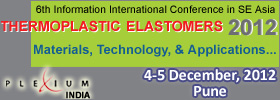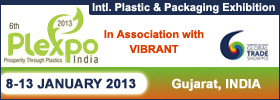
ARTICLES
Argentina’s petrochemicals market experienced a strong upturn of at least 25% in 2010 with main consumers experiencing strong growth. However, GDP growth is set to decline from over 4% in 2010 to just 1.8% in 2011, dragging down the recovery in the market. Despite robust growth levels, the petrochem industry in Argentina faces several challenges such as lack of feedstock access, severe restrictions in gas allocations to downstream industries, plant shutdowns. The consumer-led growth in plastics consumption is very short term and is likely to decline to much-reduced levels when tax breaks and subsidies are removed. In the long term, steady depreciation, owing to the current economic model of export promotion and fiscal expansion. Read more
After 25% growth in 2010, Argentina’s petrochemical market faces several challenges
After two years of dramatically shrinking demand, 2010 and 2011 have seen the thermoplastic concentrate industry in the NAFTA return to growth. Despite the impact of the recession over a six-year period since 2005, demand has still managed to average growth of around 4% per year. Use of concentrates in the thermoplastics processing industry in NAFTA is forecast to be around 3.8 bln lbs in 2012. To know more about growth drivers, rising applications in end use markets, factors impacting demand, future growth drivers, etc, read NAFTA thermoplastic concentrate makers seek to exploit opportunities for growth existing and new markets
The global commodity polymers market continues to be under severe pressure from challenges such as the European debt crisis, a slowdown in growth of emerging markets and increased competition. Despite these challenges, overall polymer consumption is poised to grow at a compounded annual growth rate (CAGR) of 4.7% pa through 2015. The industry has entered another difficult period during 2011 with worsening of the European debt crisis, volatility of the capital markets and a faltering economy. To know about cumulative global consumption of the various polymers and their consumption levels, the frontrunners and laggards, factors hampering growth, growing applications and key end-markets, etc, read Global commodity polymers market continues to be under severe pressure from challenges
Global polypropylene consumption is estimated to reach US$155 bln by 2019, boosted by especially strong growth in emerging markets. The global polyethylene industry experienced strong growth over the last five years and is expected to continue advancing to US$148.1 bln in 2017 with a CAGR of 3.5% over next five years. Strategies such as new product innovation, processes, feedstock technologies are expected to help players capture market share. Innovations in applications, growing demand in end user markets, and emerging economies are anticipated to boost the industry. However, the industry is expected to face certain challenges. Read more in Global PE and PP markets to show robust growth in next 5-7 years
Robust growth is forecast in the global rigid packaging market. Factors contributing to rising demand include growth in global manufacturing output, increased consumer spending on packaged goods, rising percentage of urban populations, etc. However, challenges will be poised by environmental concerns that will impact its share in total packaging demand. Other factors limiting rigid packaging demand include market maturity in developed countries as well as market saturation in bedrock applications. Read more in Global demand for rigid packaging to grow at CAGR of 6.4% till 2016
REACH entered into force in 1 June 2007, with a phased implementation over the next decade. When REACH is fully in force, it will require all companies manufacturing or importing chemical substances into the European Union in quantities of one ton or more per year to register these substances with a new European Chemicals Agency. Recently, a Swedish NGO has raised serious questions about REACH compliance levels. Read more in Concerns over cracks in REACH compliance



















